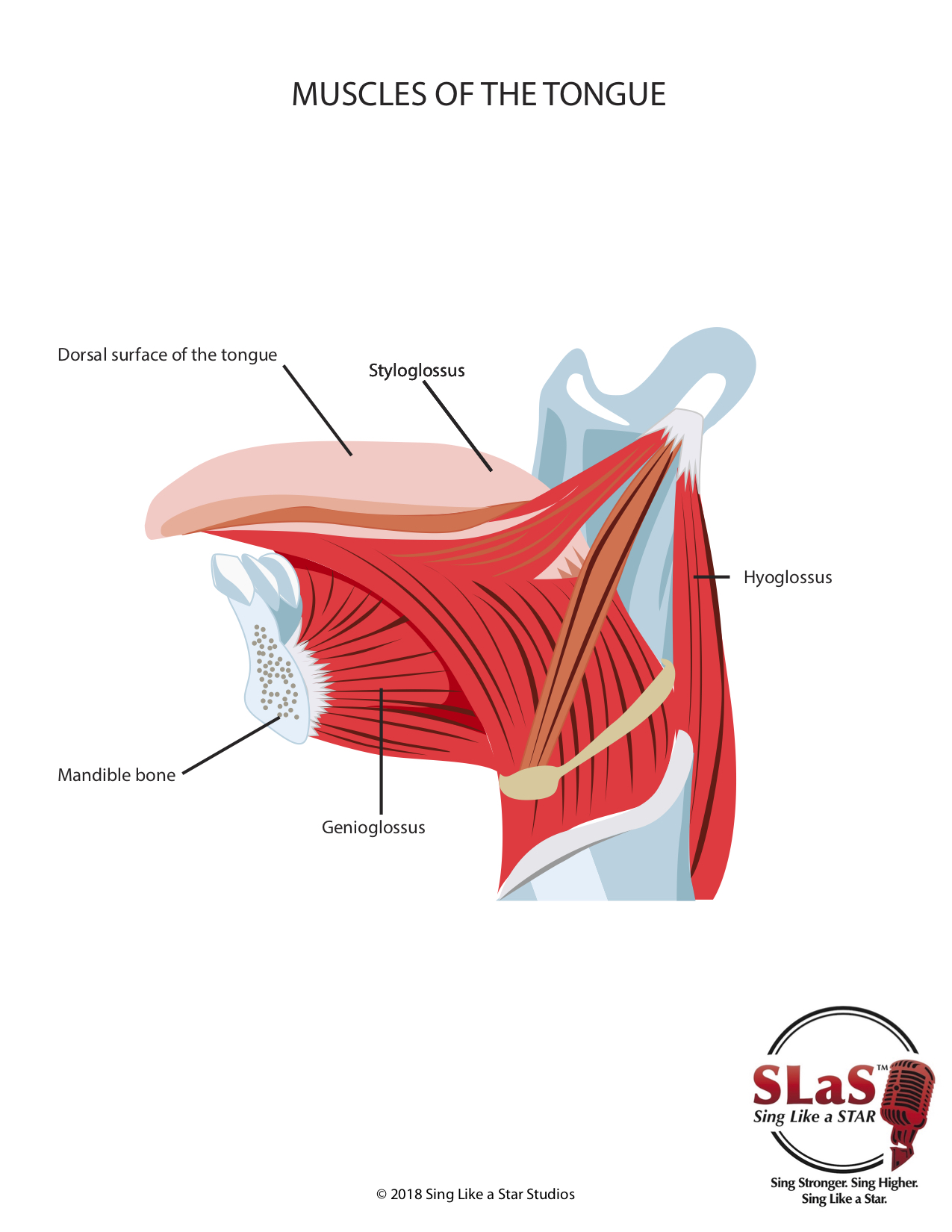How to Sing Better by Relaxing the Tongue


TONGUE INDEPENDENCE
When singers have difficulty singing certain vowels such as [i], for example, on high pitches the problem is often that the tongue is not independent of the action of the jaw. When we sing higher notes, the jaw should drop while the tongue assumes the position that will produce the clearest vowel.
The [i] vowel, for example, requires the tongue to be at its highest position in the mouth; singers often cannot sing a clear [i] vowel with the jaw dropped because the tongue drops along with the jaw. When we drop the jaw for higher pitches, vowels become muddied unless the tongue and the jaw are independent of one another.
TONGUE INDEPENDENCE EXERCISE
This exercise will develop independence between the tongue and the jaw, allowing the tongue to be able to move freely to create a clear vowel, independent of where the jaw is.
Place the palm of the hand on the chin, with the thumb and first finger on either side of the mouth, drop the jaw and say [ɑ]. Notice the tongue rests on the bottom of the mouth and is flat. Now say [i] without moving the jaw. Notice how far the tongue has to move up (it touches the upper middle teeth on both sides) to say the vowel. Now, go back and forth between these two vowels…..[ɑ]-[i]…..[ɑ]-[i]…..[ɑ]-[i]…..[ɑ]-[i]…..[ɑ]-[i] (AH-EE, AH-EE, etc)
Continue going back and forth between [ɑ] and [i] while holding the jaw down gently with the palm of the hand. Then, increase the speed gradually until you can rapidly transition between the two vowels with the [i] clearly enunciated.
Only the tongue should move; the jaw should remain low and relaxed. The sound should be free and clearly understood. Make sure not to widen the mouth into a lateral grimace for the [i] sound- the vowel is created by the tongue alone, not by large movements of the lips, which should remain in a neutral position.
If the tongue is tense or retracted, the [i] vowel will be muddy.
This exercise was introduced and demonstrated in Step Three. Vocalize along with the recorded demonstration.
Vocalizing on NG [ŋ] with the middle of the tongue slightly up and forward solves many registration problems and prevents the root of the tongue from pulling the tongue back. With the relaxed but arched posture of the NG [ŋ], the middle rather than the back of the tongue is elevated and the pharynx has greater resonating space.
The NG [ŋ] exercise is great for helping a singer move into the upper register while maintaining register connection. These sounds are helpful for most singers, but are particularly effective for the Pulled Lower category; the NG (ŋ] sound makes transitioning through the primo passaggio easier.
Another option for singers who tend to depress the base of the tongue is NY [ɳ]. Combine the NY [ɳ] with [æ] and a Voce di Strega, witchy, or bratty quality. Try the bratty playground kid sound of the sing-songy ny[æ]- ny[æ]- ny[æ]- ny[æ]- ny[æ].
Vocalizing with the tongue out of the mouth is also helpful. Try laying the tongue on the lower lip and vocalizing scales using the vowel [æ] (as in at). If the tongue continues to retract, hold it lightly with the fingertips; a wet paper towel can help.
Fronting the tongue by arching it toward the front of the mouth will produce a brighter timbre by raising the second formant frequency.

TONGUE STRETCHING
Singers should stretch the tongue every day to relieve tension. Here is a great stretching routine:
• Stick your tongue out and try to touch your nose. Hold for a count of five.
• Move your tongue to the right side of the mouth. Hold for a count of five.
• Move your tongue to the left side of the mouth. Hold for a count of five.
• Draw a large circle with the tongue, first right to left then left to right.
• Place the tip of the tongue behind the lower front teeth and roll the tongue forward and out of the mouth. Hold for a count of five. Also known as tongue push-ups, this exercise is very helpful to singers who tighten the base of the tongue.
Repeat this routine several times per day, particularly at the end of the day when tongue tension is greatest. Continue working with these exercises until the tendency to retract, depress or squeeze the tongue has been corrected.
If you would like to learn more about your voice AND learn to sing from home for less than you probably spend for lattes every month, check out our amazing YOU can Sing Like a Star online subscription courses for singers and voice teachers.
You can learn to sing with a self-study method- IF it's the right method. The ONLY method that can take you from beginner to professional is the YOU can Sing Like a Star online subscription course with over 600 recorded exercises.
This is the best method available and the ONLY method that takes you all the way from beginner to professional singer- for far less than the cost of in-person voice lessons!
Check this amazing course out at YOU can Sing Like a Star online subscription course.
If you are a voice teacher who wants to up your game, check out the YOU can be a Successful Voice Teacher online subscription course
With over 600 recorded exercises, including Riffs and Runs- Style, you don't need to be a great pianist or vocal stylist to be a great teacher!



